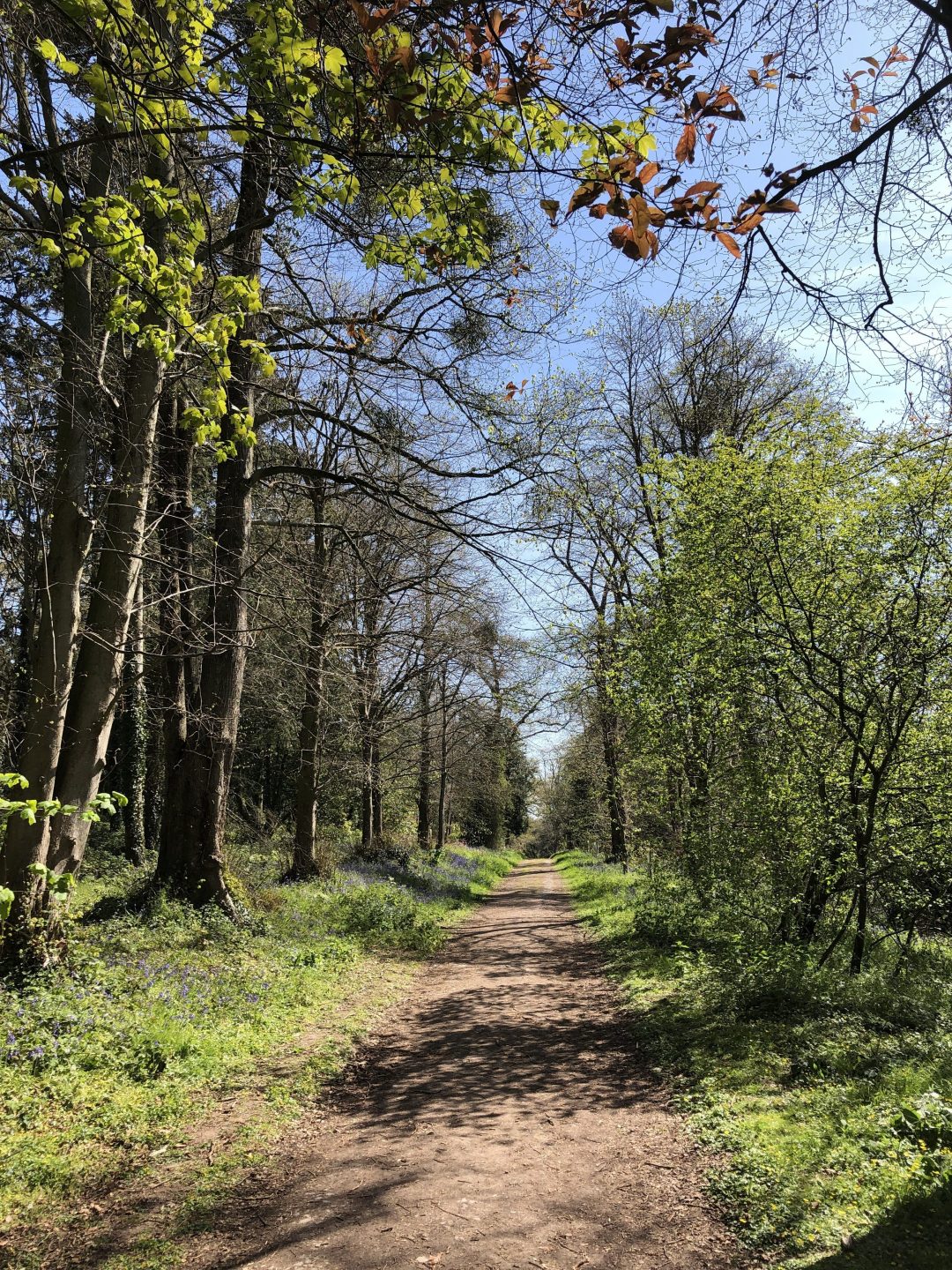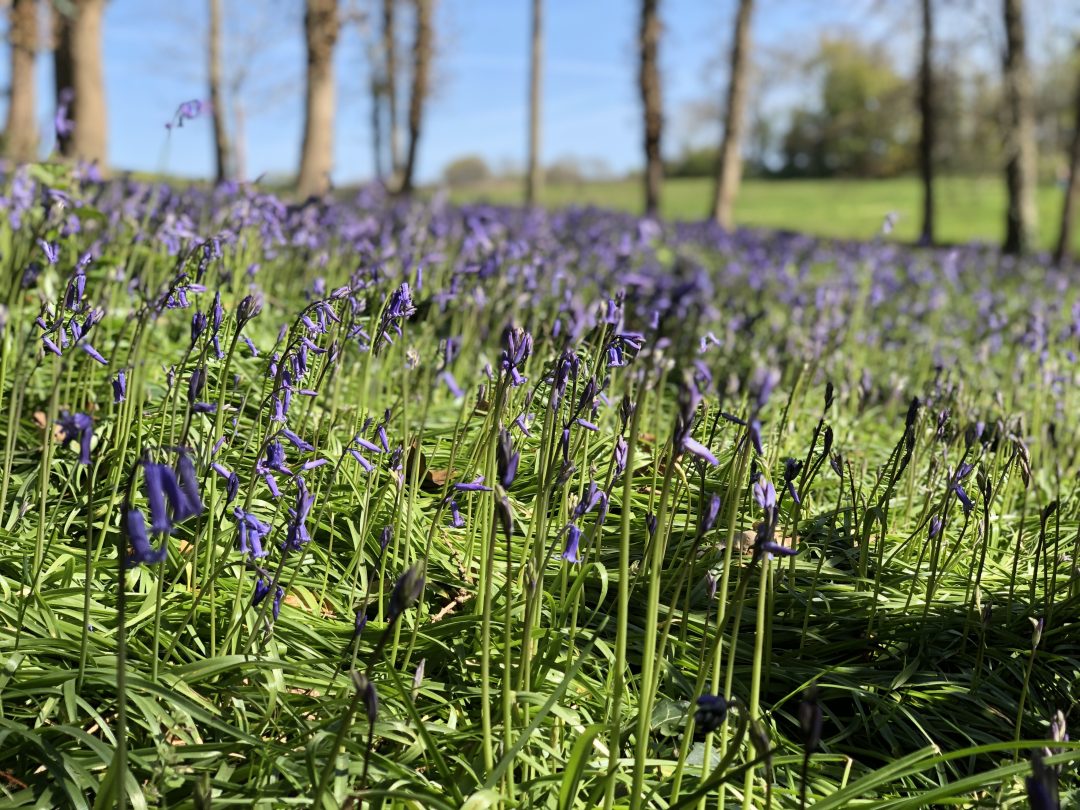Notice
From Monday 3rd February, the Stables Restaurant and Gift Shop will be open only on Thursday, Friday, Saturday and Sunday. The Gardens and House will remain open daily as usual.
In 2005, Hestercombe Gardens Trust took ownership of Gotton Copse, a patch of woodland roughly 9 acres in size, but it was several years later that we started to restore the area ~ and found swathes of glorious bluebells!
From Monday 3rd February, the Stables Restaurant and Gift Shop will be open only on Thursday, Friday, Saturday and Sunday. The Gardens and House will remain open daily as usual.
Watch above: Ben gives a tour of the Bluebell Walk at Gotton Copse
by Ben Knight, Gardener
In 2005, Hestercombe Gardens Trust took ownership of Gotton Copse, a patch of woodland roughly 9 acres in size, but it wasn't until several years later that we started to restore the area.
One of the first jobs we had to do was to remove a pheasant pen fencing which circled most of the woodland. Previously pheasants had been raised here for the local shoot. Sycamore seedlings had taken hold so our next job was to control the sycamore and clear the scrub so that we could assess the area.
Once this was completed we cleared more scrub from around the boundary so we could start a complete restoration of the drystone walls. This was a project funded by Countryside stewardship as part of rebuilding 4km of dry stone walls around the whole estate. This work was carried out by the gardens team and team of passionate volunteers. We put in a new footpath to link up with an existing footpath and created a circular walk around the edge of the wood. As winter turned into spring we began to notice an abundance of bluebells which had been sitting there dormant under all the brambles and sycamore. By mid-April there was a vivid blue carpet of them under the trees!
Over the years we've coppiced the sycamore and cut back the brambles in places to let in more light and encourage the bluebells to come up. Where we can we have replaced the sycamore with lime and oak trees which don't outcompete other species so much, allowing more species to create a broadleaved woodland.

Bluebells (hyacinthoides non-scripta) are native to the UK and provide a good source of early season nectar to bees and hoverflies. They have a very strong sweet fragrance which is very noticeable while walking through the woods.
Where Gotton copse is situated we are fortunate not to have any invading Spanish bluebells (Hyacinthoides hispanica) which pose a threat to our native bluebell by hybridising with it. The Spanish bluebell is a lot more thuggish and spreads more easily using underground runners which produce new bulbs. Our native bluebell is a lot slower to grow and takes 5 years for a seed to become a bulb; it's also illegal to dig up and move British bluebells. If you have Spanish bluebells on your land it is a good idea to remove them to help protect the native British bluebell.
You will be able to spot the difference between the two types of bluebell quite easily. The native bluebell is more delicate and its bells droop downwards. The Spanish one has much thicker stems and bigger flowers and the flower heads look up to the sky.
To manage the woodland for bluebells we cut a 10m strip alongside the path to remove any sycamore regrowth and brambles. This is carried out in the winter before the bluebells arrive to avoid damaging them and it prevents the bluebells from becoming shaded out. Brambles further back from the path are left to grow as they also provide habitat in the woodland and are fantastic for bees. When the bluebells are in full flower it gives the woodland a fantastic look and enables people to get up close while still on the path.
In particular the bluebells along the East drive towards Gotton are spectacular to see. The East drive used to be an entranceway to the estate used by the Portman family. It is lined with mature lime trees and oaks with bluebells beneath. Bluebells are an ancient woodland indicator and thrive in broadleaved woodlands and woods where rotational coppicing is carried out as they are able to get enough light, and flower before the trees are in full leaf.
From 23rd April for around 2-3 weeks, explore the Bluebell Walk at Hestercombe.
The best time to plant bluebells is after they have flowered and are in the green, but please don't go and dig them up from woodlands as it's now illegal to do this! You will find them for sale at reputable nurseries ~ and usually in the Hestercombe Plant Centre from mid-late April.

